Home> Technical Articles> Inner Rings: The Essential Components in European Precision Engineering
- AddressNo.1875 East Changjiang Road, New District, Wuxi, Jiangsu,China
- Factory AddressNo.1875 East Changjiang Road, New District, Wuxi, Jiangsu, China
- Worktime9:00-18:00
- Phone(Working Time)86-510-85310167
In the realm of precision engineering, certain components play a vital role in ensuring the seamless operation of machinery and equipment. One such component that often goes unnoticed but is essential for achieving precision and reliability is the inner ring. This article, titled "Inner Rings: The Essential Components in European Precision Engineering," delves into the significance of inner rings and their impact on precision engineering in Europe.
The Crucial Role of Inner Rings
Inner rings are integral parts of various bearing assemblies, where they serve as the raceway for rolling elements such as balls or rollers. Their primary function is to provide support and guidance to these rolling elements, allowing them to rotate smoothly within the bearing assembly. While inner rings may seem like small and simple components, they play a critical role in reducing friction, minimizing wear and tear, and ensuring the overall performance of machinery.
Exploring the Scope
This article aims to provide a comprehensive understanding of inner rings and their importance in European precision engineering. We will explore the functionality and design of inner rings, shedding light on how they facilitate the movement of rolling elements and contribute to the efficiency of various mechanical systems. Additionally, we will discuss the different types and materials of inner rings commonly used in precision engineering applications, emphasizing the significance of material selection in achieving the desired performance and longevity.
Applications in European Precision Engineering
Inner rings find applications in a wide range of industries and machinery across Europe. In this article, we will showcase the diverse array of applications where inner rings are indispensable. From manufacturing and automotive to aerospace and medical devices, inner rings play a pivotal role in ensuring the precision and reliability of machinery used in these sectors. Real-world examples will highlight how inner rings contribute to European industrial growth and technological advancement.
Adherence to Quality Standards
Ensuring the quality and precision of inner rings is paramount in European precision engineering. We will emphasize the importance of adhering to stringent quality standards in the production of inner rings. This includes discussing the manufacturing processes involved in crafting these components to exact specifications, as well as the role of reputable manufacturers in meeting the demanding requirements of precision engineering in Europe.
Innovations and Advancements
Lastly, we will explore recent innovations and advancements in inner ring technology. The article will highlight improvements in materials, coatings, and design that have paved the way for better performance, precision, and durability in precision engineering applications across Europe. These innovations are driving the adoption of inner rings as essential components in the pursuit of excellence in precision engineering.
As we embark on this journey to understand the significance of inner rings in European precision engineering, it is clear that these seemingly small components play a colossal role in achieving accuracy, reliability, and efficiency in a wide range of industries. Inner rings may indeed be essential components, but their impact on the field of precision engineering is nothing short of remarkable.

The Functionality and Design of Inner Rings
In the intricate world of precision engineering, inner rings stand as unassuming yet indispensable components. These small but vital rings play a crucial role in ensuring the seamless operation of machinery and equipment across Europe. In this section, we will dive deep into the functionality and design of inner rings, shedding light on their intricate mechanisms and essential contributions.
The Role of Inner Rings in Precision Engineering
Inner rings are a fundamental part of various bearing assemblies, where they serve as the raceway for rolling elements like balls or cylindrical rollers. Their primary function is to provide support and guidance to these rolling elements, allowing them to rotate smoothly within the bearing assembly. This guidance is vital as it ensures that the rolling elements maintain their correct alignment and spacing during operation, reducing friction and preventing unnecessary wear and tear.
Reducing Friction and Ensuring Smooth Operation
One of the key functions of inner rings is to minimize friction within the bearing assembly. Friction is a common adversary in machinery and equipment, as it can lead to energy losses, increased wear on components, and decreased overall efficiency. Inner rings are meticulously designed to facilitate the movement of rolling elements with minimal resistance, ensuring that the machinery operates smoothly and efficiently.
Precision Engineering Applications
Inner rings find applications in a wide array of industries across Europe, where precision engineering is of paramount importance. From manufacturing processes that demand high accuracy to automotive systems requiring smooth and reliable performance, inner rings are instrumental components. These rings play a pivotal role in ensuring that machinery and equipment meet the stringent precision standards required in European industries.
Customization and Material Selection
The design and material selection of inner rings are critical considerations in precision engineering. Manufacturers often customize inner rings to meet specific requirements, ensuring a precise fit and function within the intended machinery. The choice of materials, such as high-quality steel or other alloys, is vital in achieving the desired performance and longevity of inner rings. This section will delve into the intricacies of material selection and customization to highlight their significance in precision engineering applications.
Conclusion
In conclusion, inner rings, often overlooked but undeniably essential, play a fundamental role in European precision engineering. Their meticulous design and functionality ensure the smooth operation of machinery, reduce friction, and contribute to the overall efficiency of various industries. As we continue to explore the world of inner rings, it becomes evident that these unassuming components are at the heart of precision engineering, making them indispensable in achieving excellence in European manufacturing and technology.
Types and Materials of Inner Rings
In the realm of European precision engineering, inner rings are not only essential but also diverse in terms of types and materials. Understanding the various types and materials of inner rings is crucial for engineers and manufacturers striving for excellence in precision applications. In this section, we will explore the different types of inner rings and delve into the materials that form the backbone of these indispensable components.
Varieties of Inner Rings
Inner rings come in various forms to cater to the specific needs of precision engineering applications. Some of the common types of inner rings include:
|
Solid Inner Rings |
These are one-piece rings with a solid construction, typically used in applications where high radial loads and minimal deflection are critical. |
|
Split Inner Rings |
Designed with a split along their circumference, these inner rings offer ease of installation and removal. They are often employed in applications where accessibility is a concern. |
|
Drawn Cup Inner Rings |
These are lightweight and compact inner rings primarily used in needle roller bearings. They are suitable for applications with limited space and low radial loads. |
|
Cylindrical Inner Rings |
Featuring a cylindrical shape, these inner rings are well-suited for applications that require precise guidance of cylindrical rollers. |
Materials Matter in Precision Engineering
The materials used in the manufacturing of inner rings play a pivotal role in their performance and longevity. Common materials employed in crafting inner rings include:
High-Quality Steel: Steel alloys are the most prevalent choice due to their excellent strength, durability, and resistance to wear. Precision-engineered steel inner rings are capable of withstanding heavy loads and high-speed rotations.
Stainless Steel: In applications where corrosion resistance is paramount, stainless steel inner rings are preferred. These materials are ideal for industries like food processing and medical equipment manufacturing.
Alloys: Various alloy compositions can be tailored to meet specific application requirements. These alloys may include chromium, molybdenum, and other elements to enhance properties like hardness and toughness.
Ceramics: In niche precision applications where extreme conditions and superior wear resistance are critical, ceramic inner rings find their use. Their exceptional hardness and heat resistance make them suitable for specialized industries.
The Significance of Material Selection
The choice of material for inner rings is a critical decision in precision engineering. It directly impacts factors such as load-carrying capacity, resistance to wear, and overall performance. Engineers and manufacturers must carefully assess the demands of their application to select the most appropriate material for inner rings.
Conclusion
In conclusion, the world of inner rings in European precision engineering is characterized by diversity in types and materials. Understanding the different varieties of inner rings and their associated materials is paramount for achieving excellence in precision applications. Whether it's solid, split, drawn cup, or cylindrical inner rings, the right choice can make a significant difference in the performance and longevity of machinery and equipment. Material selection, with options ranging from high-quality steel to ceramics, is equally critical and must align with the specific demands of the application. In this intricate field, the choices made regarding inner rings and their materials determine the path to precision and reliability in European engineering.
Applications of Inner Rings in European Precision Engineering
Inner rings, often considered the unsung heroes of precision engineering, find their indispensable place in a wide array of applications across European industries. These crucial components play a pivotal role in ensuring the smooth and precise functioning of machinery and equipment. In this section, we will explore the diverse range of applications where inner rings are essential in the realm of European precision engineering.
Industries That Rely on Inner Rings
Inner rings are the silent performers behind the scenes in various European industries, including:
Automotive Manufacturing: In the automotive sector, inner rings are integral components in transmission systems, ensuring the precise alignment and movement of gears and bearings. They contribute to the efficient operation of gearboxes and differentials.
Aerospace Engineering: The aerospace industry demands the highest levels of precision and reliability. Inner rings are utilized in aircraft engines, where they provide support and guidance to rolling elements, reducing friction and enhancing performance.
Medical Equipment Production: Precision is paramount in medical equipment manufacturing. Inner rings are used in medical devices such as MRI machines and surgical instruments, where their accuracy ensures the effectiveness of critical procedures.
Industrial Machinery: Various industrial machinery, from printing presses to CNC machines, relies on inner rings for the smooth rotation of components. They help in minimizing wear and maintaining the precision of these machines.
Real-World Examples
To illustrate the significance of inner rings in European precision engineering, let's look at a couple of real-world examples:
High-Speed Trains: Inner rings play a vital role in the wheel bearings of high-speed trains. They enable the smooth rotation of the train wheels at high velocities, ensuring passenger safety and comfort during travel.
Wind Turbines: In the renewable energy sector, inner rings are used in the main bearings of wind turbines. These components endure substantial loads and must operate flawlessly for extended periods, making inner rings critical for reliable energy production.
Enhancing Precision and Performance
The applications of inner rings extend beyond the mentioned examples. In each of these cases, inner rings contribute to the enhancement of precision and performance. They provide support, reduce friction, and guide rolling elements, ultimately leading to the efficient operation of machinery and equipment in European industries.
Conclusion
Inner rings may not always be in the spotlight, but they are undeniably the essential components in European precision engineering. Their diverse applications across industries, including automotive, aerospace, medical equipment, and industrial machinery, highlight their significance in ensuring the smooth and accurate functioning of machinery. Real-world examples further emphasize the critical role played by inner rings in enhancing precision and performance. In the intricate world of precision engineering, these components silently contribute to the reliability and efficiency of European manufacturing and engineering processes.

Conclusion
In conclusion, this exploration of inner rings has shed light on the vital role these components play in European precision engineering. Inner rings, often overshadowed by other high-profile components, are the unsung heroes that ensure the smooth and precise operation of machinery and equipment across various industries.
Throughout this article, we have delved into the functionality and design of inner rings, their diverse types and materials, and their applications in critical European industries. From automotive manufacturing to aerospace engineering, from medical equipment production to industrial machinery, inner rings are the essential components that enhance precision and performance.
The key takeaway from our discussion is the indispensable nature of inner rings in European precision engineering. These components provide support, reduce friction, and guide rolling elements, ultimately contributing to the efficiency and reliability of machinery and equipment. Their significance cannot be overstated, and their role is poised to evolve further in the future of precision engineering in Europe.
As technology advances and industries continue to push the boundaries of precision, inner rings will undoubtedly play a pivotal role in shaping the future. Their ability to facilitate smooth and accurate movement will remain in high demand, ensuring that European precision engineering continues to lead in innovation and excellence.
In closing, inner rings may be the unsung heroes, but they are undoubtedly the essential components in European precision engineering, and their significance will only grow as the industry advances into the future.
FAQs: Common Questions About Inner Rings
we will delve into some of the most frequently asked questions about inner rings, essential components in European precision engineering. Inner rings play a crucial role in various industries by providing support and alignment for bearings, ensuring smooth and efficient operation. Let's explore these frequently asked questions to gain a deeper understanding of their significance and applications.
FAQs: Common Questions About Inner Rings
What Are Inner Rings?
Inner rings are cylindrical components designed to fit within the bore of a bearing. They are used to provide additional support, alignment, and load distribution for bearings, enhancing their performance and reliability.
Where Are Inner Rings Typically Used?
Inner rings find applications in a wide range of industries, including automotive, aerospace, manufacturing, and industrial machinery. They are commonly used in bearing assemblies to optimize load-carrying capabilities.
How Do Inner Rings Contribute to Precision Engineering?
Inner rings are precision-engineered components that ensure the proper alignment of bearings within machinery and equipment. Their precise dimensions and tolerances are essential for achieving optimal performance and precision.
What Sets Inner Rings Apart from Outer Rings?
While inner rings provide support and alignment within the bearing assembly, outer rings primarily serve as the raceways for rolling elements. Inner rings play a critical role in distributing loads evenly across the bearing components.
Are Inner Rings Interchangeable Between Bearings?
Inner rings are designed to fit specific bearing types and sizes. While some inner rings may be interchangeable within the same series of bearings, it is crucial to select the appropriate inner ring that matches the bearing's specifications for optimal performance.
How Do Inner Rings Impact Bearing Longevity?
Properly selected and installed inner rings contribute to the longevity of bearings. They help reduce stress concentrations, prevent misalignment, and distribute loads evenly, ultimately extending the service life of bearings and minimizing maintenance needs.
Can Inner Rings Be Customized for Unique Applications?
Yes, inner rings can be customized to meet the unique requirements of specific applications. Manufacturers often offer customization services to tailor inner rings' dimensions, materials, and tolerances to suit various industrial needs.
What Materials Are Commonly Used for Inner Rings?
Inner rings are typically made from high-quality bearing steel or other materials with excellent mechanical properties. The choice of material depends on factors such as load capacity, operating conditions, and temperature requirements.
How Should Inner Rings Be Installed and Maintained?
Proper installation and maintenance are essential for inner ring performance. It is crucial to follow manufacturer guidelines for installation and lubrication to ensure the inner rings function optimally throughout their service life.
Where Can I Source High-Quality Inner Rings in Europe?
High-quality inner rings are available from reputable bearing manufacturers and distributors across Europe. Sourcing inner rings from trusted suppliers ensures the reliability and performance of these essential components.
In summary, inner rings are indispensable components in precision engineering across various European industries. These FAQs provide valuable insights into their functions, significance, and common applications. As we conclude this section, we encourage readers to recognize the vital role inner rings play in ensuring the efficiency and reliability of bearing assemblies in precision engineering applications.


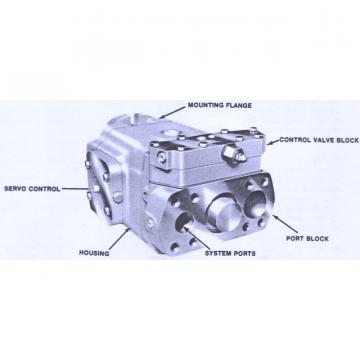 Dansion gold cup piston pump P30P-8L5E-9A4-A00-0B0
Dansion gold cup piston pump P30P-8L5E-9A4-A00-0B0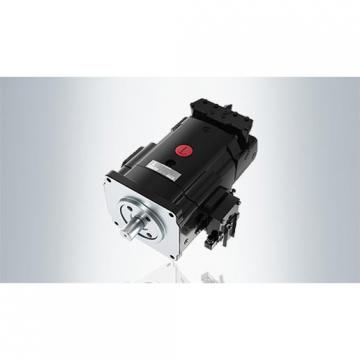 Dansion gold cup piston pump P30P-8L5E-9A2-B00-0C0
Dansion gold cup piston pump P30P-8L5E-9A2-B00-0C0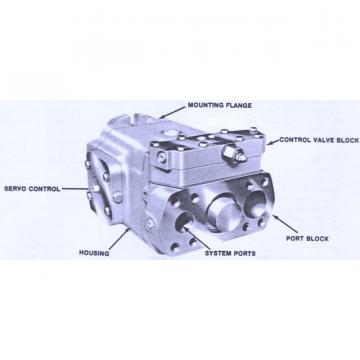 Dansion gold cup piston pump P30L-8L5E-9A7-A0X-B0
Dansion gold cup piston pump P30L-8L5E-9A7-A0X-B0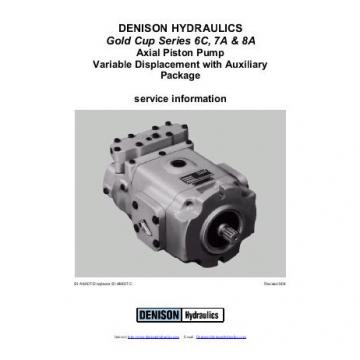 Dansion gold cup piston pump P30P-2R5E-9A7-B00-0C0
Dansion gold cup piston pump P30P-2R5E-9A7-B00-0C0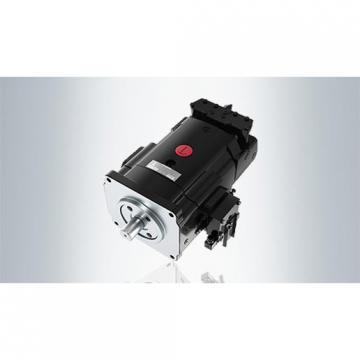 Dansion gold cup piston pump P30L-7R5E-9A2-A0X-D0
Dansion gold cup piston pump P30L-7R5E-9A2-A0X-D0